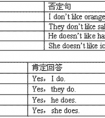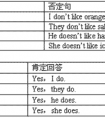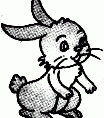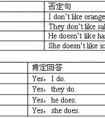按要求改写句子。1. The cat can swing. (一般疑问句) ____________ ____________ ____________ swing?2. Those are young elephants. (单数形式)____________________-五年级英语
题文
| 按要求改写句子。 |
| 1. The cat can swing. (一般疑问句) ____________ ____________ ____________ swing? 2. Those are young elephants. (单数形式) _______________________________________________________. 3. She does reading in the language lab. (否定句) She ____________ ____________ reading in the language lab . 4. Are these lovely calves yours? (肯定句) These ____________ ____________ ____________ ____________. 5. Is there a sheep near the pond? (复数形式) ____________ ____________ ____________ ____________ near the pond ? 6. We call it a kid in English. (就划线部分提问) ____________ ____________ ____________ ____________ ____________ in English ? 7. We have three English classes a week. (就划线部分提问) ____________ ____________ English classes ____________ ____________ ____________ a week? 8. The students play games once a day. (就划线部分提问) _______________________________________________________? |
答案
| 1. Can the cat 2. That's a young elephant 3. doesn't do 4. lovely calves are mine 5. Are there any sheep 6. What do you call it 7. How many, do you have 8. How often do the students play games |
据专家权威分析,试题“按要求改写句子。1. The cat can swing. (一般疑问句) _______..”主要考查你对 一般疑问句,单数名词,不定冠词(a,an),指示代词,疑问代词,系动词 等考点的理解。关于这些考点的“档案”如下:
一般疑问句单数名词不定冠词(a,an)指示代词疑问代词系动词
考点名称:一般疑问句
- 一般疑问句:
是疑问句的一种。它是以be动词,have或助动词、情态动词开头,用yes(是)或no(否)来回答的句子。
其结构是:系动词be/助动词/情态动词+主语+其他成分
一般疑问句的肯定形式为:
助动词+主语(+实义动词)。肯定答语用“yes+可定结构”。
一般疑问句的否定形式为:
助动词构成的缩写否定词+主语(+实义动词)。否定答语用“no+否定结构”。
例:
— Do you like this story-book? 你喜欢这本故事书吗?
— Yes, I do. 喜欢。/ No, I don’t. 不喜欢。
— Is he a student? 他是一名学生吗?
— Yes, he is. 是,他是。/ No, he isn’t. 不,他不是。 一般疑问句的改写:
一、含有be动词的一般疑问句,通常把be动词调到句首。例如:
陈述句:They are in the swimming pool.
一般疑问句:Are they in the swimming pool?
注意:一般疑问句句末要用“?”。
二、含有情态动词的一般疑问句(can, may...),把情态动词调到句首。例如:
陈述句:He can drive a car.
一般疑问句: Can he drive a car?
三、含有have的一般疑问句,have译为“有”。一般疑问句式有两种形式:
1.把have/has调到句首。例如:
陈述句:Tommy has a computer.
一般疑问句:Has Tommy/he a computer?
2.加助动词do/does,第三人称单数用does,其他人称用do。其句型为:Do/Does + 主语 + have...?
例如上句可变为: Does Tommy have a computer?四、一般动词的一般疑问句,也要借助助动词do/does,第三人称单数用does,其余人称用do。
其句型为:Do/Does + 主语 + 动词原形+其它?
陈述句:Amy speaks English.
一般疑问句:Does Amy speak English?一般疑问句的回答:
首先要有人称的改变。当主语为名词时,在答语中要改成其相应的代词。
另外,答语有两种,肯定的回答(用yes)和否定的回答(用no),否定式常用缩写形式。
现在还是让我们分句型一一说明。一、一般疑问句含be动词时,用be动词回答,句末用句号。例如:
-Is Mary your sister?
-Yes, she is. / No, she isn’t.(缩写)二、一般疑问句含有情态动词(can, may, should等)时,用情态动词回答。例如:
-May I come in?
-Yes, you may. / No, you can’t.三、一般疑问句含有have(译为“有”)时,有两种回答方式。
1.直接用have/has回答。
例如:
-Have they any pictures?
-Yes, they have. / No, they haven’t.
2.用助动词do/does回答。
例如:
-Does Millie smoke?
-Yes, she does. / No, she doesn’t.四、一般动词的一般疑问句回答时也用助动词。
例如:
-Do the workers live in London?
-Yes, they do. / No, they don’t.
考点名称:单数名词
单数名词:
主要用来表示“一个”东西的概念。两个及其以上就应用复数名词来描述。
例如单数可数名词:man,river,book,glass,desk,cup,road,car,eye,foot,tree,bird,girl,boy英语上名词按可数与否可分为可数名词和不可数名词。
可数名词按数目又可分为单数名词和复数名词两类。
注意:不可数名词没有复数形式,如water(水)。
考点名称:不定冠词(a,an)
不定冠词的基本用法:
(1)不定冠词有a和an两种:a用于辅音音素开头的词前,an用于元音音素开头的词前。
例如:a boy, a city, a girl, a useful animal , an old man, an honest boy, a bad apple, a tall elephant
(2) 用来表示“一”的意思,但不强调数的观念,只说明名词为不特定者。即不具体说明是何人何物。
例如:A teacher is looking for you. We work five days a week.
(3)不定冠词含有“一”的意思,但数量观念没有one强烈,在句子里边一般可以不必译出,但若有“一个”的意思则译出,
例如:An orange is good for you. 桔子对你有好处。
(4)一般用在可数名词单数前,指人或事物的某一种类。
例如:Bill is a student. This is a ruler.
(5)用在某些固定词组中。
例如:a lot of, a moment ago, a few, a little- 不定冠词的指代:
1. 首次提到的人或物。
2.指人或事物,但不具体说明何人或何物。
There are seven days in a week.We have three meals a day.
3.表示“一个”,但数的概念没有one强。
There’s a tree on the hill.He has an interesting book.
4.指某类人或事物中的任何一个。
An elephant is bigger than a horse.A car runs faster than a bike.
- 最新内容
- 相关内容
- 网友推荐
- 图文推荐
| [家长教育] 孩子为什么会和父母感情疏离? (2019-07-14) |
| [教师分享] 给远方姐姐的一封信 (2018-11-07) |
| [教师分享] 伸缩门 (2018-11-07) |
| [教师分享] 回家乡 (2018-11-07) |
| [教师分享] 是风味也是人间 (2018-11-07) |
| [教师分享] 一句格言的启示 (2018-11-07) |
| [教师分享] 无规矩不成方圆 (2018-11-07) |
| [教师分享] 第十届全国教育名家论坛有感(二) (2018-11-07) |
| [教师分享] 贪玩的小狗 (2018-11-07) |
| [教师分享] 未命名文章 (2018-11-07) |





![____ it got four wheels?[ ]A. Have B. There C. Has-五年级英语](http://www.00-edu.com/d/file/ks/4/1/65/2019-08-31/small2ca0aeba76320ba6f81e40fe83a0e8111567199443.png)
